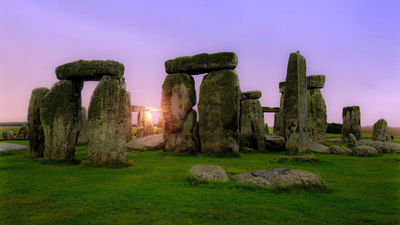Solve the mystery of "Stonehenge" Discover previously unknown clues from underground with new technology

ByHoward Ignatius
The ancient ring-shaped stone remains near Salisbury in the southern part of England "Stonehenge"Is thought to have been established between 2500 BC and 2000 BC. We surveyed around Stonehenge in detail using multiple devices and discovered new clues to solve the mystery.
BBC News - Stonehenge secrets revealed by underground map
http://www.bbc.com/news/science-environment-29126854

Professor Vincent Gaffney of Birmingham University led the project to investigate Stonehenge and its surroundings. Stonehenge stated that it was rare to investigate to the surrounding ground so far, but the Birmingham University survey combined about 3 meters underground with a combination of different types of equipment, with unprecedented level of precision We surveyed. In the early stages of the investigation, Stonehenge proved not only that it was used in traditional rituals or something, but that there are as many as 17 ruins around it. The survey seems to have investigated an area of 12 square kilometers around Stonehenge, and we will analyze the enormous data collected in detail in the future and clarify why the ruins found around Stonehenge were created It is said that it will go.
Equipment used when investigating underground around Stonehenge.

In order to investigate the inside of the ground from the decoying earth surface in detail, we are investigating the underground by combining three devices, magnetometer / ground penetrating radar (GPR) and 3D laser scanning device. Nishad Karim, a researcher at the University of Leicester, is investigating the tombstones of the 16th century Tudor dynasty using similar equipment and said, "Investigations using GPR and other technologies did not touch the ground We can explore the underground to the earth "explaining the superiority of the survey using these devices.
An underground map around Stonehenge looks like this.

One of the underground remains found in the survey is estimated to have been built about 6000 years ago using long wood of 33 meters, which was used for ceremonies and burials. It is about 300 square meters in size, the shape is trapezoidal, and it was supposed to be supporting the roof with three struts.

Also, it is speculated that all the 17 ruins underground around Stonehenge are related to the ancient ceremony, and the age that was made is the same as the generation age of Stonehenge.
The ruins called "Cursus" in the north of Stonehenge seems to have been named "Cursus" meaning horse racing in Latin as it has a giant circular groove, which reminds me of the Race racetrack . "Cursus" is a valley extending in the east-west direction, which is thought to be closely related to Stonehenge.
In addition, it seems that huge stone, timber, support pillars, etc. are buried in the basement where it seems that "Durrington Walls" existed, which are important data to reconsider the size and use of ruins It seems to be.

These survey results make the history and evolutionary processes related to Stonehenge more complicated, but it is thought that various new facts will be clarified by analyzing the data obtained from the survey in the future BBC wrote that it will be found in detail, from how and when the development of Stonehenge surroundings developed by analysis.
In addition, Professor Gaffney who led the project and the volunteer group aiming to protect historic buildingsNational TrustDr. Nick Snashall, who belongs to Dr. Nick Snashall, said, "With our technology in the 21st century, our insight on Stonehenge has been greatly changed."
Related Posts:
in Science, Posted by logu_ii







